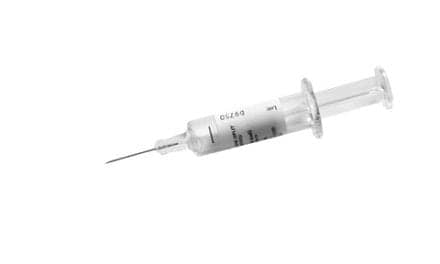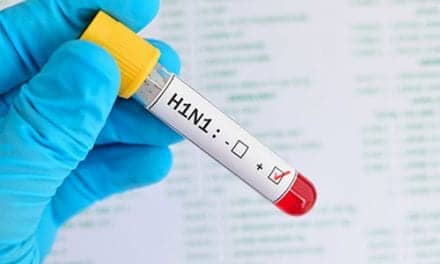In studies examining the risk of adverse outcomes after receipt of the influenza A(H1N1) vaccine, infants exposed to the vaccine in utero did not have a significantly increased risk of major birth defects, preterm birth, or fetal growth restriction; while in another, study researchers found a small increased risk in adults of the nervous system disorder, Guillain-Barre syndrome (GBS), during the 4 to 8 weeks after vaccination, according to two studies published in JAMA.
In the first study, led by Björn Pasternak, MD, PhD, of the Statens Serum Institut in Copenhagen, Denmark, the research team investigated whether exposure to an adjuvanted influenza A(H1N1)pdm09 vaccine during pregnancy was associated with increased risk of major birth defects, preterm birth, and fetal growth restriction. According to background information in the article, the 2009 influenza A(H1N1) pandemic put pregnant women at increased risk of illness, death, and poor pregnancy outcomes. "Pregnant women were among the main target groups prioritized for vaccination against influenza A(H1N1)pdm09, and an estimated 2.4 million women were vaccinated during pregnancy in the United States alone. However, assessment of the fetal safety of H1N1 vaccination in pregnancy has been limited to a few pharmacovigilance reports and descriptive cohort studies."
The registry-based study included all live-born singleton infants in Denmark delivered between November 2, 2009, and September 30, 2010. The researchers estimated the prevalence odds ratios of adverse fetal outcomes, comparing infants exposed and unexposed to an AS03-adjuvanted influenza A(H1N1)pdm09 vaccine during pregnancy. Following exclusions, a group of 53,432 live-born infants was identified with 6,989 (13.1%) exposed to the vaccine during pregnancy.
In a propensity score-matched analysis of 330 infants exposed to the vaccine in the first trimester of pregnancy and 330 unexposed, there were 18 infants (5.5%) diagnosed with a major birth defect among those exposed compared with 15 (4.5%) among the unexposed. Among infants exposed to the H1N1 vaccine in the first trimester, 31 (9.4%) were born preterm compared with 24 (7.3%) among the unexposed. Preterm birth occurred in 302 of 6,543 infants (4.6%) with second- or third-trimester exposure, compared with 295 of 6,366 unexposed infants (4.6%). "Taking gestational age into account, there was no increased risk of small size for gestational age associated with vaccination in the first (25 [7.6%] exposed versus 31 [9.4%] unexposed) or the second or third trimester (641 [9.7%] exposed versus 657 [9.9%] unexposed)," the researchers write.
"In conclusion, this nationwide cohort study in Denmark found no significant associations between exposure to an AS03-adjuvanted influenza A(H1N1)pdm09 vaccine in pregnancy and risk of adverse fetal outcomes including major birth defects, preterm birth, and growth restriction,” the authors write. “Although the data provide robust evidence of safety with respect to outcomes associated with second- or third-trimester exposure, results from analyses of first-trimester exposure should be viewed as preliminary and need confirmation. Further research also needs to address risk of specific birth defects as well as effectiveness of H1N1 vaccination in pregnancy."
The second study, led by Philippe De Wals, MD, PhD, of Laval University, Quebec City, Canada, sought to assess the risk of GBS following pandemic influenza vaccine administration. In fall 2009 in Quebec an immunization campaign was launched against the 2009 influenza A(H1N1) pandemic strain. By the end of the year, 4.4 million residents had been vaccinated. The study included follow-up over the 6-month period of October 2009 through March 2010 for suspected and confirmed GBS cases reported by physicians, mostly neurologists, during active surveillance or identified in the provincial hospital summary discharge database. Immunization status was verified.
Over the 6-month period, 83 confirmed GBS cases were identified. Twenty-five confirmed cases had been vaccinated against 2009 influenza A(H1N1) 8 or fewer weeks before disease onset, with most (19/25) vaccinated 4 or fewer weeks before onset. Analysis of data indicated a small but significant risk of GBS following influenza A(H1N1) vaccination. The number of cases attributable to vaccination was approximately 2 per 1 million doses. The excess risk was observed only in persons 50 years of age or older.
"In Quebec, the individual risk of hospitalization following a documented influenza A(H1N1) infection was 1 per 2,500 and the risk of death was 1/73,000. The H1N1 vaccine was very effective in preventing infections and complications. It is likely that the benefits of immunization outweigh the risks," the authors write.
Source: JAMA and Archives Journals









